 W
WInformal wear, also called business wear, corporate/office wear, tenue de ville and (colloquially) dress clothes, is a Western dress code for clothing defined by a dress shirt with necktie, sometimes with a business suit for men, and cocktail dress or pant suit for women. On the scale of formality, it is considered less formal than semi-formal wear but more formal than casual wear, yet retaining availability for more personal expression than semi-formal wear. Thus, informal should not be confused with casual wear such as business casual or smart casual despite that some people may refer loosely to informal dress as "formal" in contrast with merely casual.
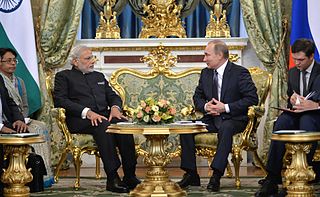 W
WA suit is a set of men's or women's clothes comprising a suit jacket, or coat, and trousers. When of identical textile, and worn with a collared dress shirt, necktie, and dress shoes, it was traditionally considered informal wear in Western dress codes. The lounge suit originated in 19th-century Britain as more casual wear alternative for sportswear and British country clothing. After replacing the black frock coat in the early 20th century as regular daywear, a sober one-coloured suit became known as a lounge suit. A darker, understated lounge suit for professional occasions became known as a business suit.
 W
WThe black lounge suit (UK), stroller (U.S.), or Stresemann, is a men's day attire semi-formal intermediate of a formal morning dress and an informal lounge suit; comprising grey striped or checked formal trousers, but distinguished by a conventional-length lounge jacket, single- or double-breasted in black, midnight blue or grey. This makes it largely identical to the formal morning dress from which it is derived, only having exchanged the morning coat with a suit jacket, yet with equivalent options otherwise, such as necktie or bowtie for neckwear, a waistcoat, French cuffs dress shirt of optional collar type, and black dress shoes or dress boots. The correct hat would be a semi-formal homburg, bowler, or boater hat. Just as morning dress is considered the formal daytime equivalent of formal evening attire dress coat i e. white tie, so the stroller is considered the semi-formal daytime equivalent of the semi-formal evening attire dinner jacket i.e. black tie. Unlike other dress codes, there is no clear equivalent for women, though typical morning dress and cocktail dress have both been identified as alternatives.
 W
WBlack tie is a semi-formal Western dress code for evening events, originating in British and American conventions for attire in the 19th century. In British English, the dress code is often referred to synecdochically by its principal element for men, the dinner suit or dinner jacket. In American English the equivalent term tuxedo is common. The dinner suit is a black, midnight blue or white two- or three-piece suit, distinguished by satin or grosgrain jacket lapels and similar stripes along the outseam of the trousers. It is worn with a white dress shirt with standing or turndown collar and link cuffs, a black bow tie, typically an evening waistcoat or a cummerbund, and black patent leather dress shoes or court pumps. Accessories may include a semi-formal homburg, bowler, or boater hat. For women, an evening gown or other fashionable evening attire may be worn.
 W
WA Brunswick gown or Brunswick is a two-piece woman's gown of the mid-eighteenth century.
 W
WBuckskins are clothing, usually consisting of a jacket and leggings, made from buckskin, a soft sueded leather from the hide of deer. Buckskins are often trimmed with a fringe – originally a functional detail, to allow the garment to shed rain, and to dry faster when wet because the fringe acted as a series of wicks to disperse the water – or quills. They also served as a form of camouflage when hunting, by breaking up the outline of the wearer and allowing them to blend in with their background.
 W
WA Buster Brown suit was a very popular style of clothing for young boys in the United States during the early 20th century. It was named after the comic strip character Buster Brown, created in 1902 by Richard Felton Outcault.
 W
WA demob suit was a suit of civilian clothes given to a man on his demobilisation from the British armed forces at the end of the Second World War. Although the suits were of good quality, the need to clothe millions of demobilising servicemen led to supply problems that caused some men to receive suits that were not of the correct size. As a result, the demob suit became a common subject in British comedy in the post-war years.
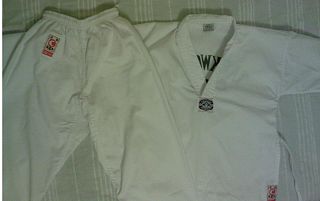 W
WDobok is the uniform worn by practitioners of Korean martial arts. Do means "way" and bok means "clothing." The dobok is related to the Japanese keikogi/dōgi, used in Japanese martial arts, such as judo.
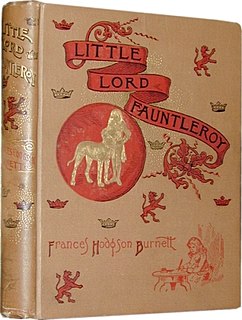 W
WLittle Lord Fauntleroy is a novel by the English-American writer Frances Hodgson Burnett, her first children's novel. It was published as a serial in St. Nicholas Magazine from November 1885 to October 1886, then as a book by Scribner's in 1886. The illustrations by Reginald B. Birch set fashion trends and the novel set a precedent in copyright law when Burnett won a lawsuit in 1888 against E. V. Seebohm over the rights to theatrical adaptations of the work.
 W
WA suit is a set of men's or women's clothes comprising a suit jacket, or coat, and trousers. When of identical textile, and worn with a collared dress shirt, necktie, and dress shoes, it was traditionally considered informal wear in Western dress codes. The lounge suit originated in 19th-century Britain as more casual wear alternative for sportswear and British country clothing. After replacing the black frock coat in the early 20th century as regular daywear, a sober one-coloured suit became known as a lounge suit. A darker, understated lounge suit for professional occasions became known as a business suit.
 W
WA jinbei (甚平) is a traditional set of Japanese clothing worn by men, women and children during summer. Consisting of a side-tying, tube-sleeved kimono-style top and a pair of trousers, jinbei were originally menswear only, though in recent years, women's jinbei have become popular.
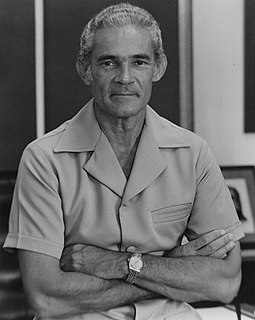 W
WA Kariba or Kareeba suit is a two-piece suit for men created by Jamaican designer Ivy Ralph O.D., mother of Sheryl Lee Ralph, in the early 1970s to be worn on business and formal occasions as a Caribbean replacement for the European-style suit and a visual symbol of decolonisation. The suit was popularised by Michael Manley, the leader of the People's National Party. The style of the jacket is considered a formalised version of a safari jacket or bush shirt common in Africa, worn without a shirt and tie, making it more comfortable clothing for a tropical climate.
 W
WLapels are the folded flaps of cloth on the front of a jacket or coat and are most commonly found on formal clothing and suit jackets. Usually they are formed by folding over the front edges of the jacket or coat and sewing them to the collar, an extra piece of fabric around the back of the neck.
 W
WCreated in 1966 by famous couturier Yves Saint Laurent, the Le Smoking tuxedo suit for women was the first of its kind to earn attention in the fashion world and in popular culture. The tuxedo suit was designed for women. The collection created huge negative responses at first. The designer took bits and pieces from both men’s suit and women’s clothing and combined it with new ideas. As the tuxedo was designed for females, they were different from the normal male tuxedo. The collar was more feminine as the shape and curve were more subtle. The waistline of the blouse was narrowed to show the body shape and pants were adjusted to help elongate the leg.
 W
WA leisure suit is a casual suit consisting of a shirt-like jacket and matching trousers (pants) often associated with American-influenced fashion and fads of the 1970s.
 W
WLittle Lord Fauntleroy is a novel by the English-American writer Frances Hodgson Burnett, her first children's novel. It was published as a serial in St. Nicholas Magazine from November 1885 to October 1886, then as a book by Scribner's in 1886. The illustrations by Reginald B. Birch set fashion trends and the novel set a precedent in copyright law when Burnett won a lawsuit in 1888 against E. V. Seebohm over the rights to theatrical adaptations of the work.
 W
WMess dress uniform is the most-formal or semi-formal type of uniforms used by military personnel, police personnel, firefighters and other public uniformed services members for certain ceremonies, receptions, and celebrations, in messes or on private occasions. It frequently consists of a mess jacket, trousers, white dress shirt, often with standing collar and bow tie, along with orders and medals insignia. Design may depend on regiment or service branch, e.g. army, navy, air force, marines, etc. In Western dress codes, mess dress uniform is a permitted supplementary alternative equivalent to the civilian black tie for evening wear or black lounge suit for day wear - sometimes collectively called half dress - although military uniforms are the same for day and evening wear. As such, mess dress uniform is considered less formal than full dress uniform, but more formal than service dress uniform.
 W
WMorning dress, also known as formal day dress, is the formal Western dress code for day attire, consisting chiefly of, for men, a morning coat, waistcoat, and formal trousers, and an appropriate gown for women. Men may also wear a popular variant where all parts are the same colour and material, often grey and usually called "morning suit" or "morning grey" to distinguish it; considered properly appropriate only to festive functions such as summer weddings and horse races, which consequently makes it slightly less formal. The correct hat would be a formal top hat, or if on less spacious audience settings optionally a collapsible equivalent opera hat.
 W
WPajamas (US) or pyjamas (commonwealth), sometimes shortened to PJs, jammies, or Jim-jams, are several related types of clothing originating from the Indian subcontinent. In the Western world, pajamas are soft, warm, and traditionally loose garments derived from the Indian daywear pajamas. They are worn for sleeping, working from home, and lounging.
 W
WA pantsuit or pant suit, also known as a trouser suit outside the United States, is a woman's suit of clothing consisting of pants and a matching or coordinating coat or jacket.
 W
WA pink suit was worn by Jacqueline Bouvier Kennedy on November 22, 1963, when her husband, United States President John F. Kennedy was assassinated in Dallas, Texas. Made of wool bouclé, the double-breasted, raspberry pink and navy trim collared suit was matched with a trademark matching pink pillbox hat and white gloves. After President Kennedy was assassinated, Jacqueline Kennedy insisted on wearing the suit, stained with his blood, during the swearing-in of Lyndon B. Johnson on Air Force One and for the flight back to Washington, D.C., with the president's body.
 W
WA racing suit or racing overalls, often referred to as a fire suit due to its fire retardant properties, is clothing such as overalls worn in various forms of auto racing by racing drivers, crew members who work on the vehicles during races, track safety workers or marshals, and in some series commentators at the event.
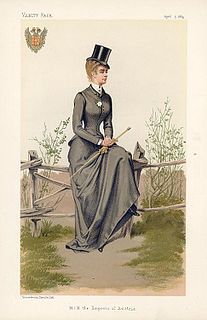 W
WA riding habit is women's clothing for horseback riding.
 W
WA safari jacket or bush jacket is a garment originally designed for the purpose of going on safari in the African bush. When paired with trousers or shorts, it becomes a safari suit. A safari jacket is commonly a lightweight cotton drill or lighter poplin jacket, traditionally khaki in color, with a self-belt, epaulets, four or more expandable bellows pockets and often with cartridge loops.
 W
WA sailor suit is a uniform traditionally worn by enlisted seamen in a navy or other governmental sea services. It later developed into a popular clothing style for children, especially as dress clothes.
 W
WA Santa suit is a suit worn by a person portraying the legendary character Santa Claus. The modern American version of the suit can be attributed to the work of Thomas Nast for Harper's Weekly magazine, although it is often incorrectly thought that Haddon Sundblom designed the suit in his advertising work for The Coca-Cola Company. Sundblom's work did standardize the western image of Santa, and popularized the image of the red suit with white fur trim. This has become the image of the American Santa, while in some European countries where Saint Nicholas remains popular, the outfit worn is closer to religious clothing, including a Bishop's mitre.
 W
WScrubs are the sanitary clothing worn by surgeons, nurses, physicians and other workers involved in patient care in hospitals. Originally designed for use by surgeons and other operating room personnel, who would put them on when sterilizing themselves, or "scrubbing in", before surgery, they are now worn by many hospital personnel. Their use has been extended outside hospitals as well, to work environments where clothing may come into contact with infectious agents. Scrubs are designed to be simple, easy to launder, and cheap to replace if damaged or stained irreparably. In the United Kingdom, scrubs are sometimes known as theatre blues.
 W
WShalwar kameez is a traditional combination dress worn by women, and in some regions by men, in South Asia, and Central Asia.
 W
WA skeleton suit was an outfit of clothing for small boys, popular from about 1790 to the late 1820s, after which it increasingly lost favor with the advent of trousers. It consisted of a tight short- or long-sleeved coat or jacket buttoned to a pair of high-waisted trousers. Skeleton suits are often described as one of the earliest fashions to be specifically tailored for children, rather than being adult fashions sized down. Previously young boys wore dresses until they were breeched, or put into trousers.
 W
WA tracksuit is an article of clothing consisting of two parts: trousers and a jacket usually with front zipper. It was originally intended for use in sports, mainly for athletes to wear over competition clothing and to take off before competition. In modern times, it has become commonly worn in other contexts. The tracksuit was one of the earliest uses of synthetic fibers in sportswear.
 W
WA waistcoat in BrE, or vest in AmE, is a sleeveless upper-body garment. It is usually worn over a dress shirt and necktie and below a coat as a part of most men's formal wear. It is also sported as the third piece in the traditional three-piece male suit. Any given vest can be simple or ornate, or for leisure or luxury. Historically, the vest can be worn either in the place of or underneath a larger coat dependent upon the weather, wearer, and setting.
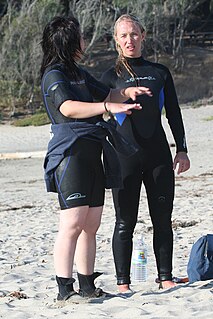 W
WA wetsuit is a garment worn to provide thermal protection while wet. It is usually made of foamed neoprene, and is worn by surfers, divers, windsurfers, canoeists, and others engaged in water sports and other activities in or on water, primarily providing thermal insulation, but also buoyancy and protection from abrasion, ultraviolet exposure and stings from marine organisms. The insulation properties of neoprene foam depend mainly on bubbles of gas enclosed within the material, which reduce its ability to conduct heat. The bubbles also give the wetsuit a low density, providing buoyancy in water.
 W
WM. Wile and Company Factory Building is a historic garment factory located at Buffalo in Erie County, New York. It is an early and significant example of the "Daylight Factory." The four story building erected in 1924, is constructed of reinforced concrete and features curtain walls of metal sash windows. It was home to M. Wile & Company until 1999; a major manufacturer of men's suits founded by Mayer Wile in Buffalo in 1877. In 1969, the company became a subsidiary of Hartmarx.
 W
WA zoot suit is a men's suit with high-waisted, wide-legged, tight-cuffed, pegged trousers, and a long coat with wide lapels and wide padded shoulders. This style of clothing became popular in African-American, Mexican American, Italian American, and Filipino American communities during the 1940s.
 W
W